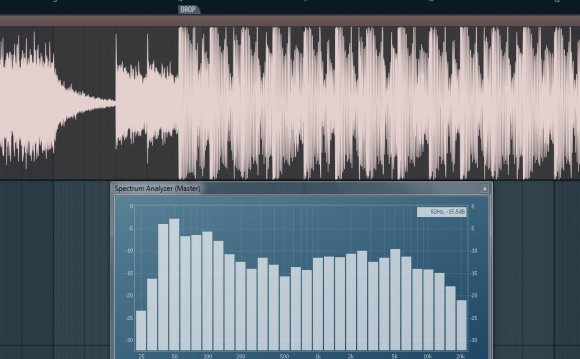
Change could be the nature of electronic music. To keep speed, the composer must adjust. Composing and creating Electronic Music is a totally existing way of teaching students the necessary tools and techniques to create contemporary digital music in many different designs, including drum and bass, hypnotic trance, dub, and household. You will see the history of electronic songs with listening examples that highlight the significant men and women, technology, and methods from the design. The classes will feature a series of video clips describing musical, DAW, and synthesis methods proper towards design. Per style, there'll also be a research and analysis component, which students learn to pay attention critically and adapt to alterations in technology and public musical style. Students tend to be after that accountable for producing a total bit of music for that design. Work can be done in almost any major DAW that supports AU, RTAS, or VST tools, including Pro Tools, Logic, Cubase, or Live, or perhaps in Reason*.
This music composition program will teach topics like rhythm and balance within the framework of a DAW, beginning in the 1st few days with an introduction to common scales and rhythms. While the training course progresses, the musical instances be more complex as a harmonic language appropriate into types is created. The program takes an equivalent approach with synthesis, within the standard concepts of syntheses making use of a custom-built synthesizer. Rapidly, the course moves into Native Instruments' Massive synthesizer being develop spots proper every single style. With a comprehensive knowledge of these patches, then you're able to use exactly the same ideas to another synth.
By analyzing and composing in a variety of electronic music styles, you will get a deep understanding of numerous areas of contemporary electronic songs, including music, harmony, bass lines, groove, melodies, synthesis, audio/MIDI editing, results processing, sound design, type, performance, and mixing.
Because of the end of this program, it will be easy to:
- Compose and produce in a variety of varieties of electronic songs, including jungle/drum&bass, trance, glitch, dub, electro, minimal, downtempo, household, and techno
- Analyze digital songs to steadfastly keep up on current trends
- Synthesize the most important the different parts of electronic music
- Comprehend the main areas of groove
- Build complex and layered drum grooves
- Utilize complex sign movement for imaginative purposes
- Layer acoustic and electric elements
- Utilize automation successfully
- Compose with balance proper to digital songs
- Utilize reverb and wait in numerous contexts
- Create exciting builds and pauses
- Compose and synthesize powerful hooks
- Utilize compressors, gates, and filters with and without sidechain inputs
- Make use of your sequencer to produce complex edits
- Synthesize complex and evolving basses, shields, and prospects
- Create a variety of interesting synth motions
- Utilize higher level quantization features to add human being feel
- Compose and series keyboard parts
- Use delays to generate developing soundscapes
*Much for the course product is shown with local Instruments' huge and iZotope Alloy, that aren't supported by Reason. A skilled student usually takes what's demonstrated during these products and apply all of them in explanation. Students opting to take the course using Reason must already have a stronger basis in synthesis, sequencing, and sound design with Reason.
Author & Instructor
Loudon Stearns is an associate professor at Berklee university of Music, a training course author and teacher at Berklee on line, and an active media-artist. Inside the modern Writing and Production division at Berklee university of musical he prepares students to get results as separate composers and producers in a technology-laden music business. On line, he targets the newest digital songs types and music-technology innovations, showing pupils how-to evaluate contemporary types and use the newest songs technology in their own works. An innovator both in knowledge and art, Loudon authored an enormous Open on the web Class, "Introduction to musical Production, " which has had provided high-quality free eduction to hundreds of thousands of pupils, obtained an award through the University Professional and Continuing knowledge Association for "Excellence in Teaching" and got the "quality in Media Art" prize from Emerson university Visual and Media Art department.
Keeping a Bachelors of Music in Contemporary Writing and Production and Bass Efficiency from Berklee College of Music, and a Master of Fine Arts in Media Art from Emerson university, Loudon brings from a diverse variety of skills when you look at the creation of his own multi-media performances offering live songs, projection-mapping, party, visual art and interaction. Of specific interest is utilizing the whole planet as a performance room through the use of net streaming to coordinate many performers and audiences on vastly different parts of the planet. The technical and aesthetic challenges with this style of overall performance tend to be brand new and interesting and require the kind of wide skill-set that Loudon has developed through his substantial institutional and self education in music, sound, performance, motion visuals, photography, development, and construction.
Instructor
Chrissy Tignor Fisher is a producer, songwriter, tracking professional and vocalist with a super-synthy pop design fused with EDM and hip-hop influences. She is full-time faculty within the modern Writing and manufacturing department and has worked with the likes of Alex Clare, Gary Go, Bastille and Notting Hill Music. Her songs has-been synced on Discovery Channel therefore the BBC, and she presently creates, writes and remixes beneath the pseudonym information Child.









